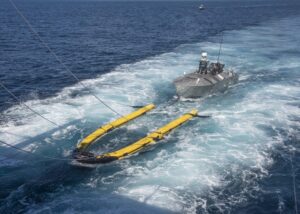
The Navy this week declared the Littoral Combat Ship (LCS) Mine Countermeasures Mission Package (MCM MP) achieved initial operational capability (IOC). The MCM MP consists of an integrated set of unmanned systems and sensors based on an unmanned vessel and a helicopter to counter mines in littoral waters in order to replace the aging Avenger-class MCM ships and MH-53E Sea Dragon helicopters. IOC was declared by the Deputy Chief of Naval Operations for Warfighting Requirements and Capabilities (OPNAV N9) Vice…

 By
By 











